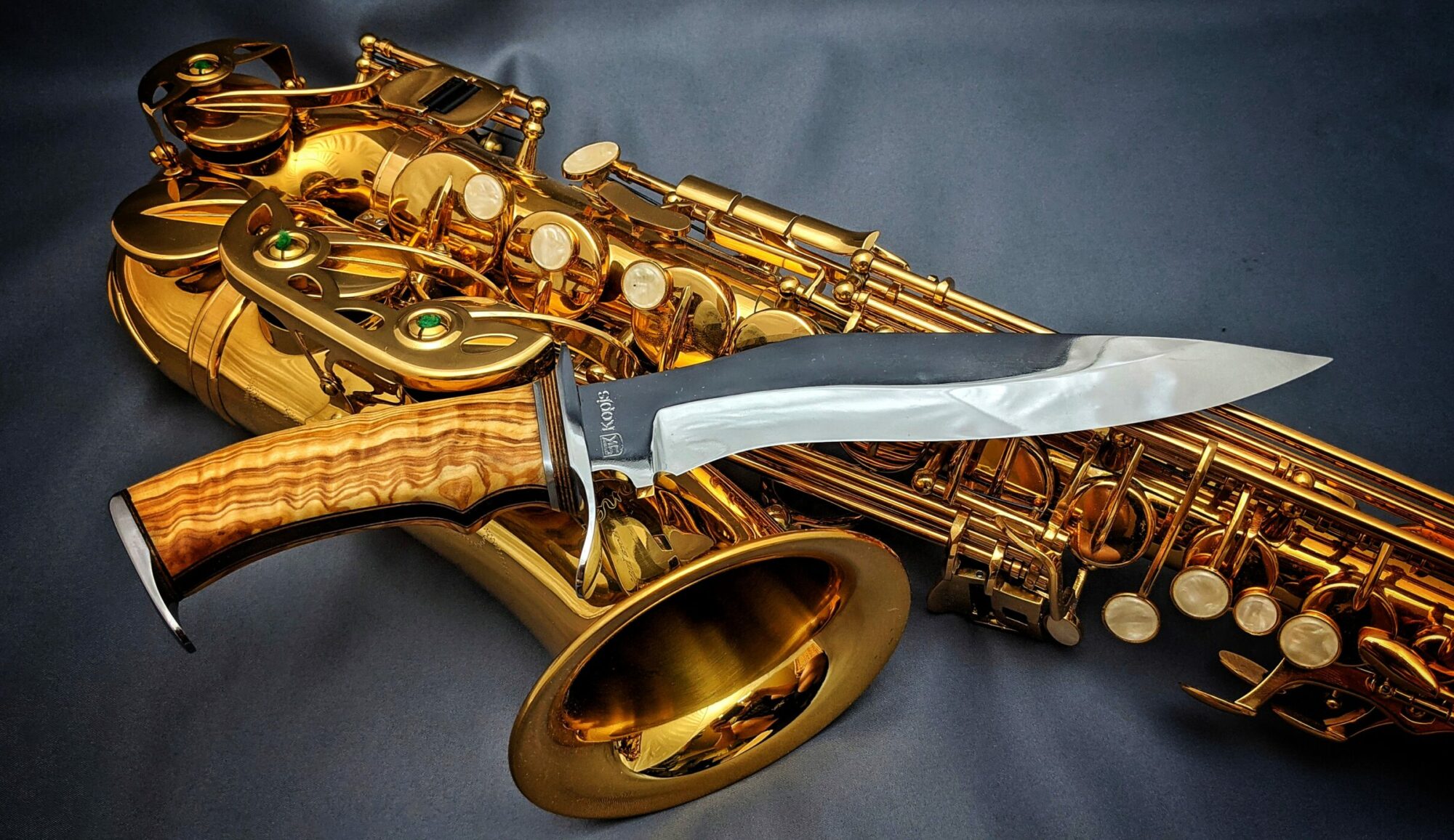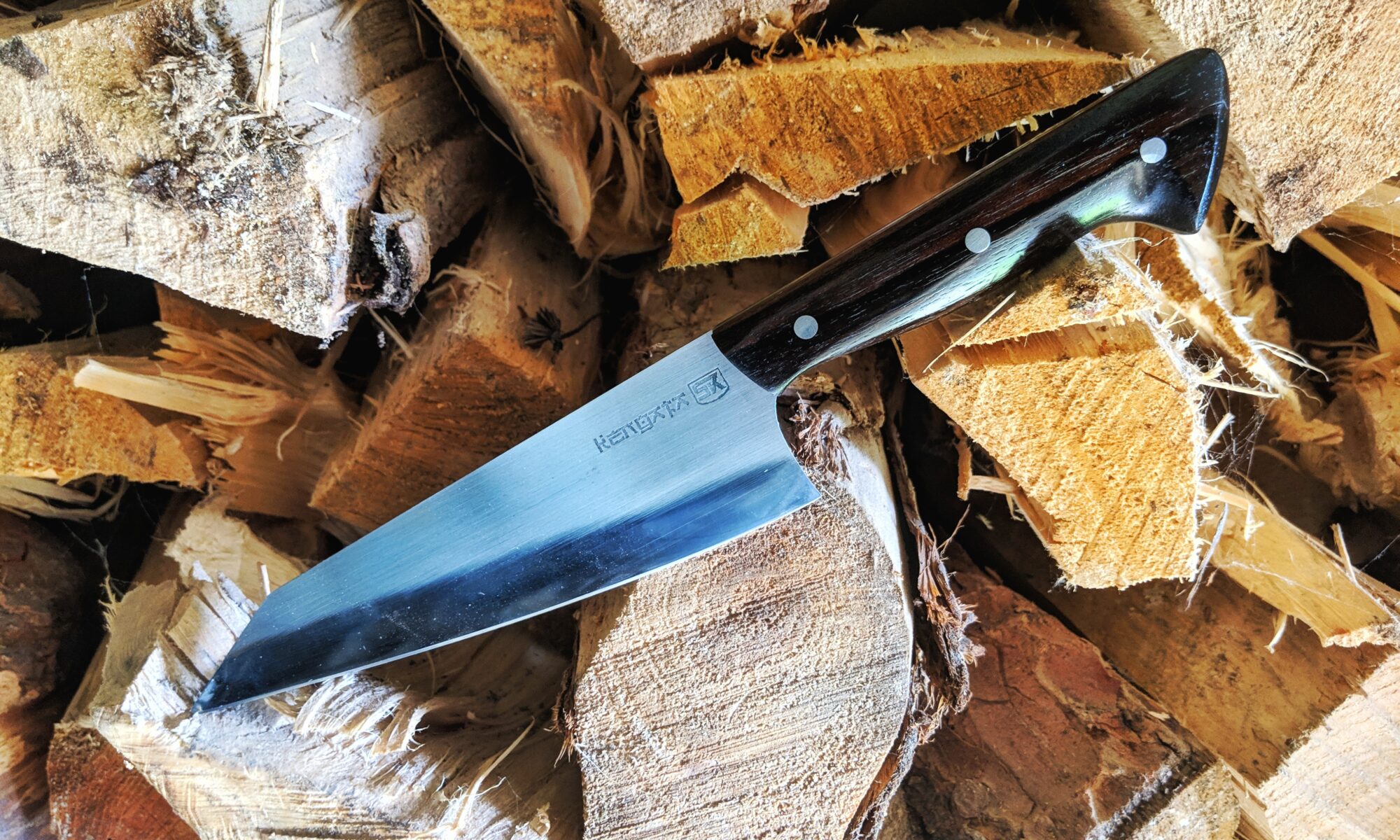I always planned to make a kitchen knife. Not just because I like cooking myself and I do hate dull knives while cutting things. But I like to make things that can actually be used on a daily basis.
I use my Meat Cleaver: the Butcher and I love how sharp it is when cutting meat. But it is a bit chunky, has a short blade and most of all the blade is absolutely straight, that is not always ideal for cutting (and the next cleaver will have a slight radius to the blade).
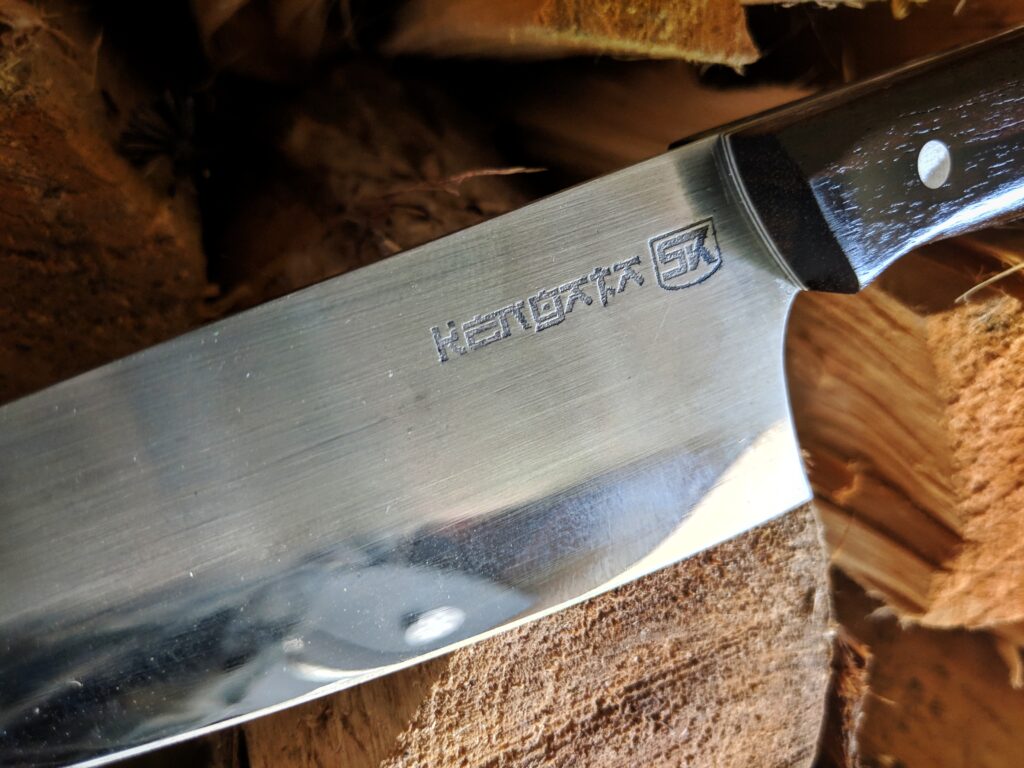
I looked for inspiration on Instagram and the web and soon found Japanese style knives. The ones of the widest usage spectrum are called Santoku – which translates into “three virtues” or “three uses” and is a general-purpose knife form. The word refers to the wide variety of ingredients that a Santoku knife can handle: meat, fish, and vegetables.
There are also different variants of Santoku blades and the ones I liked the most can be found if you look up Kangata Santoku in your favorite search engine. I could not find out what Kengata means.
I designed the blade a bit different, as I always love to add a bit of my own style – probably give it a bit of a western touch.
I had bought 2 mm thin 1.2510 (01 Tool Steel) for this purpose as I wanted a thinner blade than I did for my outdoor knives. And I wanted to give this steel a try.
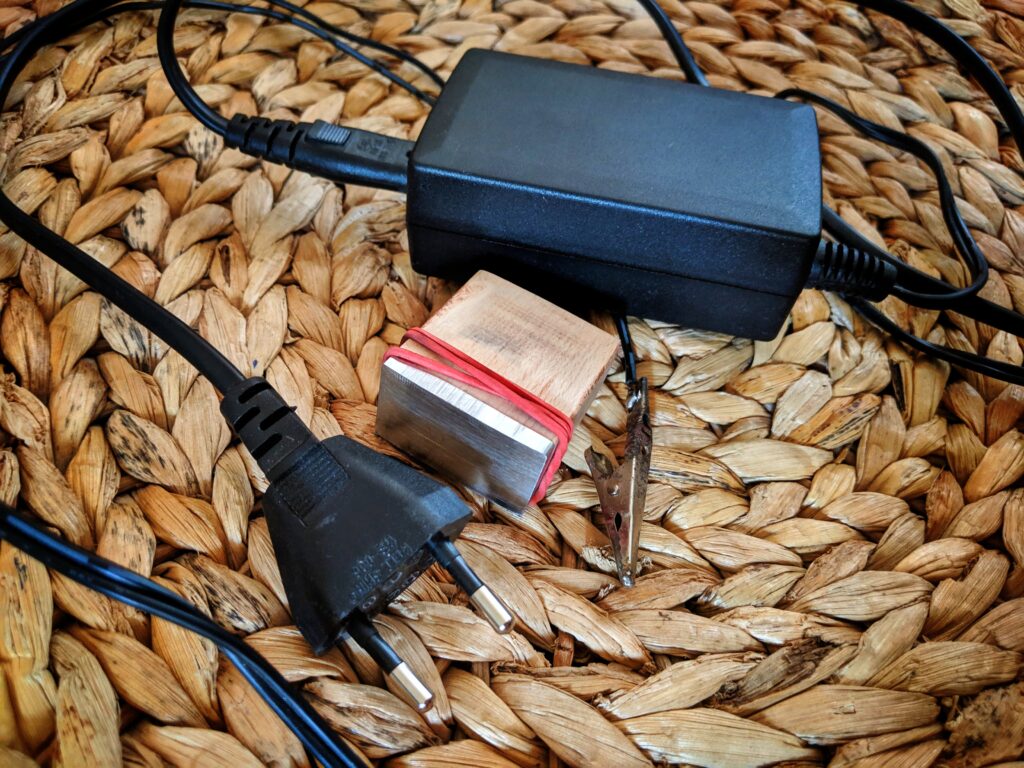
Before etching my maker’s mark I improved my self made etching machine with a better clamp and a nice handle for the cloth. Now that works much better and cleaner. The first lesson I learned on this project: Make sure the stencil is not upside down or it makes you look silly. At least I noticed that mistake so early that I could grind away the marking before it was too deep in the steel and do it again.
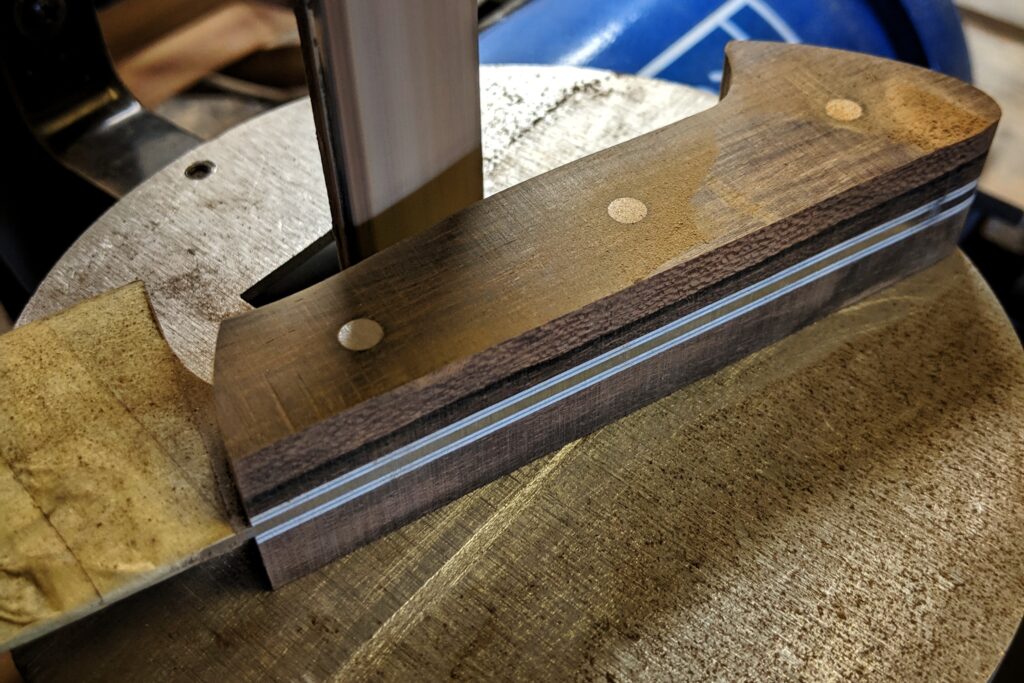
The second lesson I learned: Ziricote wood is HARD. I chose it for the handle because of the dark color. It has a strong tendency to crack and I had any new belts for my grinder so I had a hard time bringing the handle into shape. I used a metal file I normally use for the blades. I think this is also the last time I use Ziricote wood.
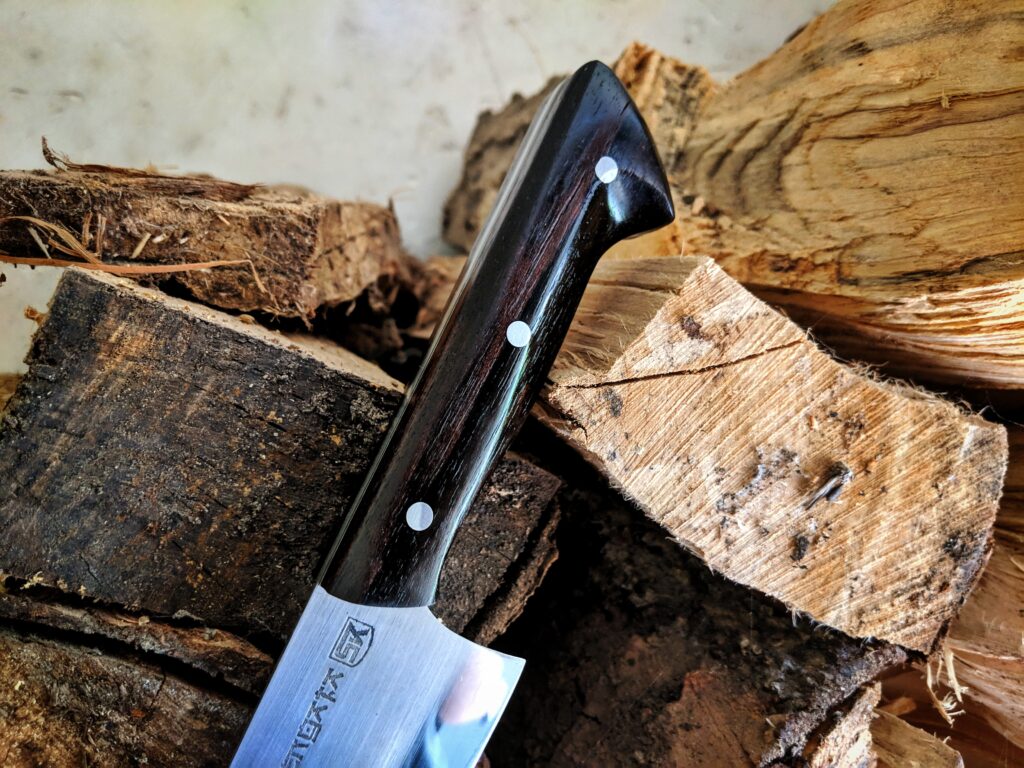
Finally, I got the handle to the desired shape. I wanted to give the heel a distinct look and also add some ergonomics to the feel of the grip. In the end, I am happy with the result. The knife will be a gift but I will make this model again – at least one for my own kitchen…
